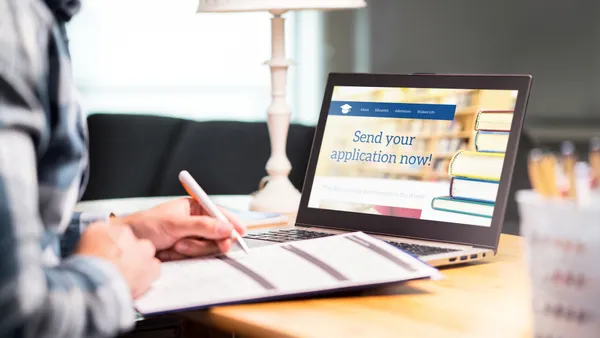Dive Brief:
- According to some estimates, there are over 500,000 IT jobs left vacant each year; an recent IBM survey showed 57% of tech and academic stakeholders agree business and university partnerships are critical to giving students the workforce skills they need.
- Existing examples of this collaboration include an Arizona State University program that partners with a Silicon Valley institution, Draper University, to help students design startups. And, Georgia Institute of Technology has also created labs where students can develop products, but also learn how to pitch them in the business world, reports EdTech Magazine.
- Partnerships can also take form in the development of a career pipeline through the K-12 level as well, with states such as Rhode Island investing in programs like Pathways in Technology Early College High School Initiative (P-TECH), where community colleges work with high schoolers to build workforce and entrepreneurial skills in students before they get to college.
Dive Insight:
Preparing students for the workforce, particularly in highly technical jobs, requires more than just STEM classes and training — it also requires significant focus on transferable skills, like communication and collaboration, and focus on the entrepreneurial spirit to make students' tech knowledge more valuable in the workplace. This development can happen through every stage of the educational pipeline, with high school students participating in programs like apprenticeships, where they can actually go into the workforce and put their skills to practice.
And obviously at the higher education level, these initiatives are absolutely critical for students to get a better idea of what they need to succeed after they graduate from college. With the generous number of tech jobs going unfilled each year, higher ed and industry partnerships are an effective way to deliver the necessary content knowledge and practical business training to students, so they are fully prepared for working life.











